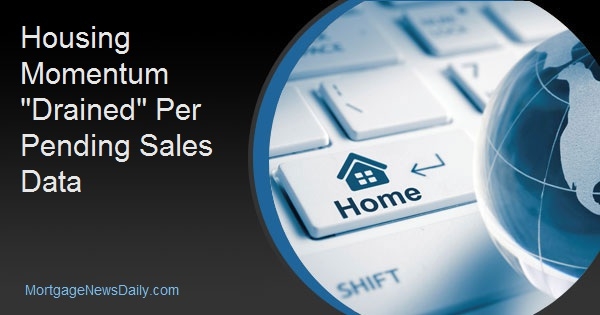The prospects for home sales weakened further in August, and the National Association of Realtors® (NAR) has downgraded its sales forecast for the remainder of 2017. In what must be the gloomiest report in some time, NAR announced its Pending Home Sales Index (PHSI) slipped on a monthly basis for the fifth time in six months; the last increase was 1.5 percent in June. NAR expects the two Hurricanes that hit Texas, Florida, and Georgia to result in slower activity going forward, pulling existing sales below 2016 levels.
The PHSI is a forward-looking indicator based on signed contracts to purchase existing homes. NAR said the measure retreated to 106.3, down 2.6 percent from both the July reading and that of August 2016. It was also the fourth month out of the last five that the index has failed to outpace its year earlier levels. The August decline takes the index to its lowest level since it posted at 106.1 in January of last year.
The actual PHSI numbers reported today are far below even the most pessimistic expectations. Analysts polled by Econoday had forecast a decline of 0.2 percent from the July reading. The range of estimates ran from -0.6 percent to +1.2 percent.
Lawrence Yun, NAR chief economist, says this summer's "terribly low supply levels" have officially drained all of the housing market's momentum over the past year. "August was another month of declining contract activity because of the one-two punch of limited listings and home prices rising far above incomes," he said. "Demand continues to overwhelm supply in most of the country, and as a result, many would-be buyers from earlier in the year are still in the market for a home, while others have perhaps decided to temporarily postpone their search."
Yun sees little relief from the housing shortages that continue to plague several areas and believes the housing market has essentially stalled. There could be further complications from the hurricanes Harvey and Irma. The former's damage to the Houston area is already showing up in the August PHSI readings for the South, and Yun expects that will likely continue in the months ahead. The temporary pause in activity in Florida in the wake of Hurricane Irma will slow overall sales even more in the South starting with the September pending sales report.
In light of the above, Yun now forecasts existing-home sales to close out the year at around 5.44 million, down from his previous forecast of 5.49 million. The new number is 0.2 percent lower than the 5.45 pace of sales last year, whereas an increase, albeit slight, of 0.7 percent had been expected. He upgraded his estimate for appreciation, now putting the median gain at around 6 percent rather than the 5 percent predicted earlier. In 2016, existing sales increased 3.8 percent and prices rose 5.1 percent.
"The supply and affordability headwinds would have likely held sales growth just a tad above last year," Yun said. "But coupled with the temporary effects from Hurricanes Harvey and Irma, sales in 2017 now appear will fall slightly below last year. The good news is that nearly all of the missed closings for the remainder of the year will likely show up in 2018, with existing sales forecast to rise 6.9 percent."
The PHSI in the Northeast fell 4.4 percent to 93.4, and is now 4.1 percent below a year ago. In the Midwest, the index decreased 1.5 percent to 101.8, putting it 3.2 percent below the previous August.
Pending home sales in the South retreated 3.5 percent to 118.8, down 1.7 percent year-over-year and the West PHSI at 101.3, is down 1.0 percent and 2.4 percent from the two previous periods.
A sale is listed as pending when the contract has been signed but the transaction has not closed, though the sale usually is finalized within one or two months of signing. The index is based on a large national sample, typically representing about 20 percent of transactions for existing-home sales. In developing the model for the index, it was demonstrated that the level of monthly sales-contract activity parallels the level of closed existing-home sales in the following two months.
An index of 100 is equal to the average level of contract activity during 2001, which was the first year to be examined. By coincidence, the volume of existing-home sales in 2001 fell within the range of 5.0 to 5.5 million, which is considered normal for the current U.S. population.







